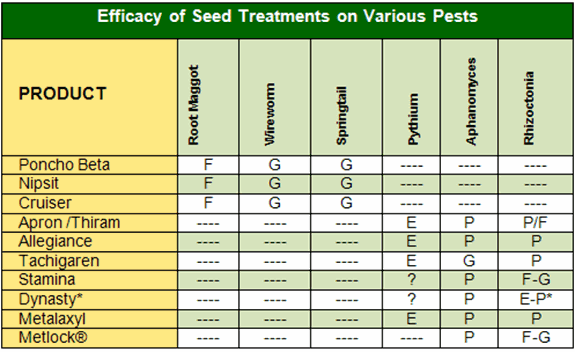572 - Managing Fields In 2013 After Unharvested Beets
The entire crop has been unable to be harvested due to wet field conditions and frost damage in 2012. When sugarbeets are left unharvested potential management concerns for crop production on those fields in 2013 should be considered. It is unlikely that serious production problems should arise for any crop in 2013. However the following information may provide answers to maximize yield of crops planted on fields or parts of fields with abandoned beets in 2012.
General Considerations
- Determine if abandoned acreage is large enough to justify separate management practices in 2013.
- Make a map of abandonment areas or fields for future reference.
- Complete as much seedbed preparation as possible for the 2013 crop this fall if tillage is done.
- Beet deterioration may be greatest if left intact in the ground until spring.
Fertility Management
Nitrogen
- Flail shredding or defoliation of tops will accelerate release of N for subsequent crops
- Fall 2012 soil testing will not give an accurate index of nitrogen availability.
- Use 2012 beet field satellite imagery for N credits for the 2013 crop.
- N in the tops will be available very early in the spring of 2013.
- Each ton of roots with yellow tops will tie up about 5-6 lbs per acre of soil nitrogen.
- Each ton of roots with green tops will tie up about 2 lbs per acre of nitrogen.
- Spring applied N will be used more effectively.
- Apply N fertilizer as close to planting as possible in 2013 to reduce nitrogen immobilization as abandoned beets decompose.
- Banded N for 2013 row crops will be more effective than broadcast nitrogen.
- Side dress part of the nitrogen in 2013 after row crop emergence to maximize N use efficiency for long season crops like corn.
- Apply 30-50 lb./acre additional N for all non-legume crops to be grown in 2013.
Potassium
- Incorporation of sugarbeet roots and tops usually increases the content of available K in the soil.
- No additional K fertilizer should be required - follow normal soil test recommendations.
Phosphorus and Sulfur
- P deficiency might occur on fields testing low or very low for P.
- Use past P soil test data on abandoned beet fields to fertilize for 2013.
- Consider applying additional P fertilizer for crops with high demand like soybeans.
- Banded applications of P in the spring will be most effective for 2013 crops.
- Starter P is recommended where practical to use it.
- Sulfur deficiency is not very likely, but might occur early in the spring and disappear as crops root into subsoil sulfur supplies.
Diseases
- Incorporating sugarbeet roots is likely to increase root rot inoculum levels in that part of the field where root rot was present when abandoned.
- Plant small grains to reduce disease buildup following abandonment.
- If abandoning beets from a field with an Aphanomyces history be sure to use an Aphanomyces tolerant variety and Tachigaren the next time beets are planted.
- If abandoning a field with Rhizoctonia present, consider small grains for 2013 instead of beans, corn or potato that are also susceptible to Rhizoctonia.
Crop Rotation Concerns
- Plant soybean after abandoned beets to avoid N management concerns in 2013.
- Limited soil profile recharge of available water may impact early season crops less than long season crops (corn or beans), if rainfall is below average in 2013.
- Careful spring tillage may be required to maximize stand establishment.
- If seedbeds are poor consider increasing seeding rates by 10% after abandoned beets to overcome stand establishment problems with small grains, corn or soybean.
- Soil sample parts of fields where beets were abandoned in 2012 separately from the rest of the field in the fall of 2013, nutrient differences are likely to occur.
Value of Seed Treatments
Be sure you know how effective your seed treatment is for specific problems in a field. Remember seed treatments are not expected to provide season long protection against pests and diseases.

E=Excellent G=Good F=Fair P=Poor
* At rate Dynasty is sold, activity is poor. Active ingredient actually has excellent activity against Rhizoctonia.
